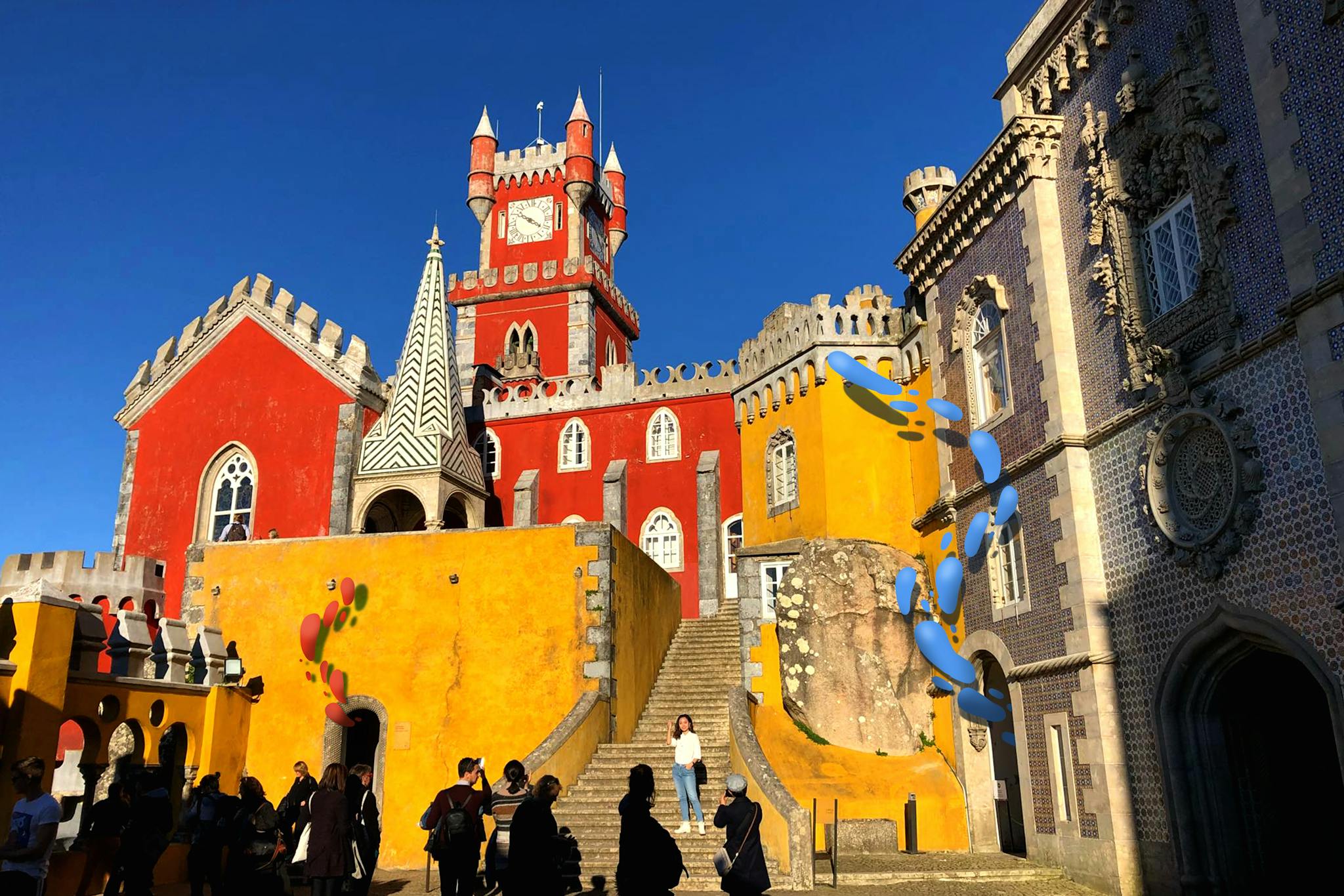
10 Fantastic Things to Do in Portugal
In Portugal, you'll find beautiful attractions, abundance of fresh seafood, inspiring music and rich history. It's a hard task to select only ten fantastic things to do in Portugal, but here's our attempt.
As a travel destination, Portugal has it all: miles of glorious coastline, rich, fascinating history, and fabulous gastronomy. Travel to Portugal and you’ll find sun-kissed cities, ruined Moorish castles, impossibly beautiful beaches, and some of the best wine in Europe.
Yet, in the tourism stakes, this stunning country has long played second fiddle to neighboring Spain, despite being regularly touted as one of the best-value destinations on the continent.
Portugal is a treasure trove of natural, cultural and gastronomic delights, and we couldn’t recommend this country enough. There are countless reasons to visit Portugal, but to whet your appetite and give you some ideas, here’s our pick of ten fantastic things to do in Portugal.
1. Roam the Parque Natural do Suoeste Alentejano e Costa Vicentina
 Praia de Odeceixe Mar in Parque Natural do Suoeste Alentejano e Costa Vicentina. Canva/zhekos.
Praia de Odeceixe Mar in Parque Natural do Suoeste Alentejano e Costa Vicentina. Canva/zhekos.
Covering over 100km of coastline, wrapped around the Western Algarve, this protected natural reserve is one of the country’s finest treasures and certainly one of the most beautiful places to visit in Portugal. Offering fabulous coastal walks across an untamed landscape, the park is a paradise for hikers and nature lovers.
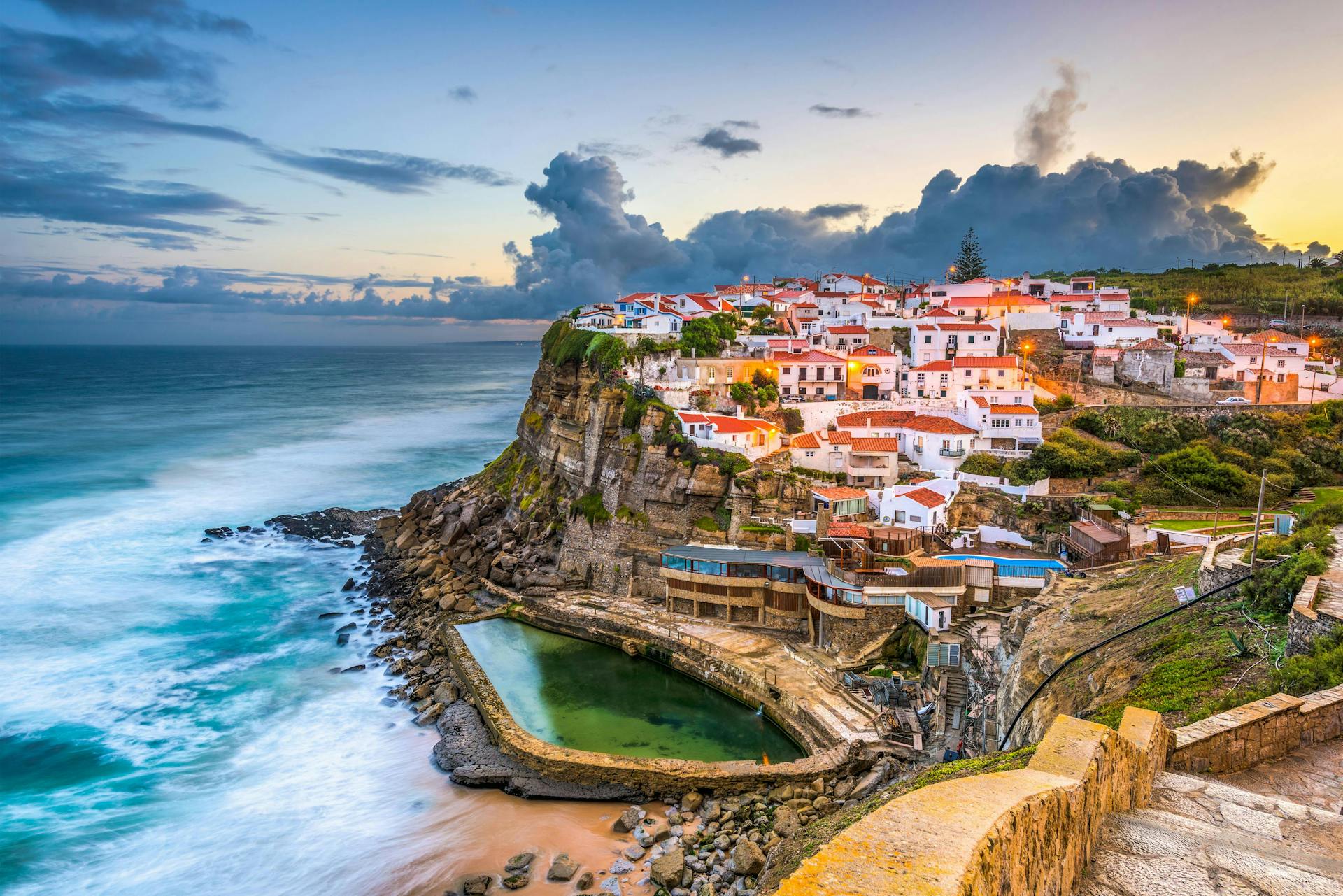 Azenha do Mar beach in Parque Natural do Suoeste Alentejano e Costa Vicentina. Canva/Sean Pavone.
Azenha do Mar beach in Parque Natural do Suoeste Alentejano e Costa Vicentina. Canva/Sean Pavone.
Surfers will also enjoy the crashing waves and expansive beaches that offer perfect conditions for body boarding and kite-surfing. The park is home to an abundance of bird life, and if you’re lucky, you may catch a glimpse of rare fishing eagles and white storks. In spring, the vertiginous cliffs are covered in wild flowers, making this a wonderful place to simply come and get lost.
2. Listen to Fado in Lisbon’s Alfama
 Fado band playing on the streets of Alfama. Canva/Jacek_Sopotnicki.
Fado band playing on the streets of Alfama. Canva/Jacek_Sopotnicki.
Fado is, without doubt, the sound of Portugal. At once uplifting and utterly heartbreaking, the sonorous, melancholic strains of fado can be heard across the country, although it is perhaps best associated with the underground bars of Lisbon’s Alfama district.
See also: Lisbon: Live Fado Show With Dinner
Fado first emerged as the song of Lisbon’s sailors and dock workers in the early 19th century, and is characterized by saudade – a Portuguese word that expresses longing, or nostalgia. These narrative songs often tell the story of lost love or exile, but even if you don’t understand the lyrics, the music speaks for itself.
 A fado bar in Alfama, Lisbon. Flickr/Pedro Ribeira Simoes.
A fado bar in Alfama, Lisbon. Flickr/Pedro Ribeira Simoes.
A fado concert is one thing you must see in Portugal, and Lisbon’s ancient Moorish quarter, the Alfama, is packed with hole-in-the-wall bars and restaurants where you’ll find top-quality singers. In particular, Mesa de Frades is a magical old-world restaurant covered in traditional tiles and murals, where you can enjoy a slap-up meal and unforgettable music.
See also: Lisbon Wine And Tapas Tasting
3. Marvel at the Caves of the Algarve
 Benagil Cave. Canva/Iurii Buriak.
Benagil Cave. Canva/Iurii Buriak.
 Praia do Camilo in Algarve. Canva/YatoKenshin.
Praia do Camilo in Algarve. Canva/YatoKenshin.
Portugal’s southern coast, known as the Algarve, is home to some of the most impressive and dramatic limestone cliffs you will ever see. Perhaps the most famous is Benagil Cave, a swirling limestone vortex that opens out on to a white sandy beach.
See also: Benagil Cave SUP Tour in Algarve
Although it’s one of the most photographed sights in Portugal, there are plenty of other geological marvels in this region, and all along the coast you’ll find impossibly long, sandy beaches crowned with dramatic rocks and caves.
4. Explore Sintra’s Fabulous Castles
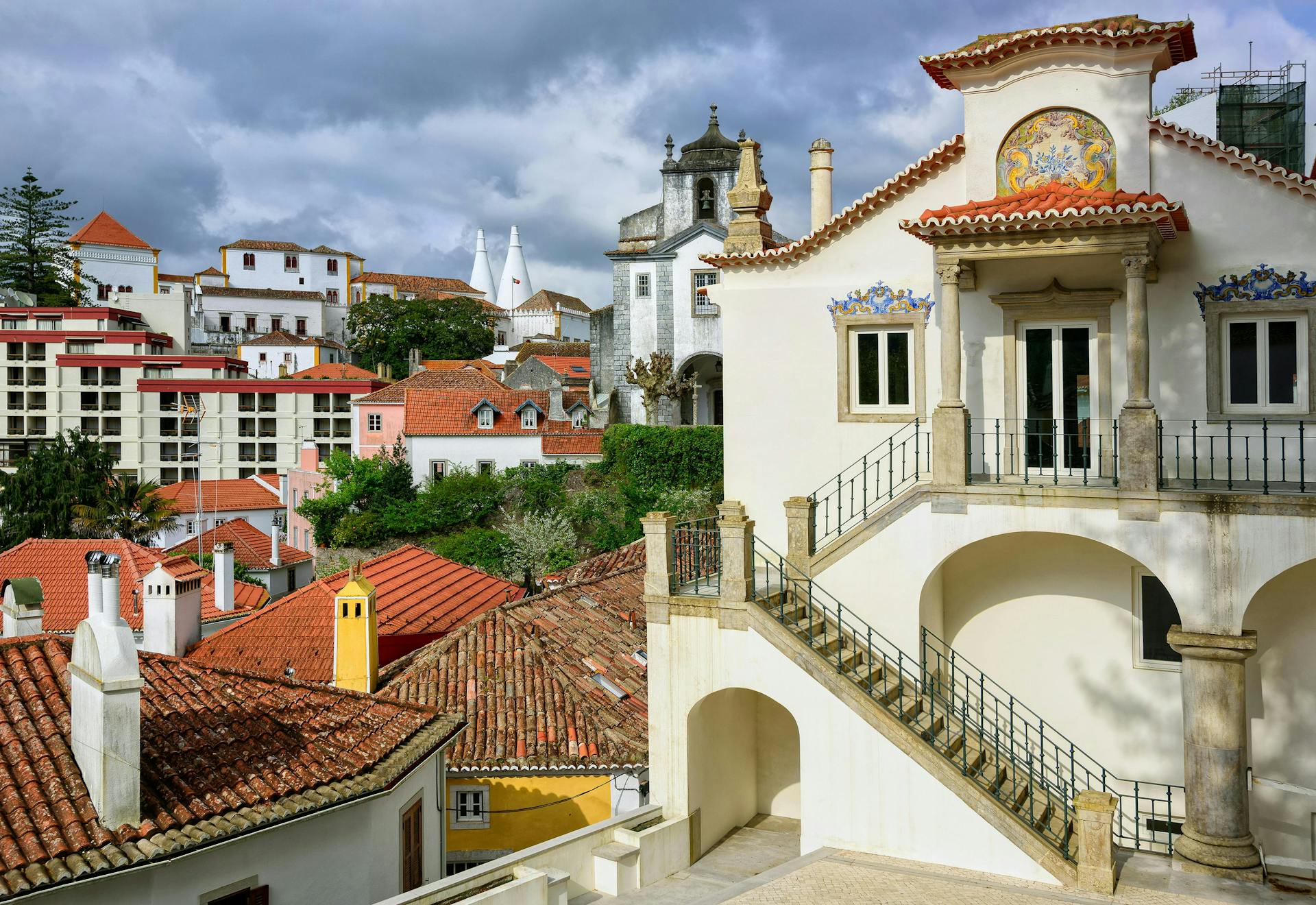 The town of Sintra. Canva/Xantana.
The town of Sintra. Canva/Xantana.
Just a short ride from the bustling capital of Lisbon, the sleepy Portuguese town of Sintra offers an embarrassment of riches for history lovers. You’ll find opulent mansions and country homes, impressive fortified castles and luxury palaces, all nestled amidst the pine-scented hills. Sintra is a reminder of Portugal’s medieval Muslim past, and typifies the best of everything the country has to offer: color, history, and charm in abundance.
See also: The Non-Touristic Sintra Tour
With its vivid colors, the Palácio Nacional de Pena is the stuff of fairytales, boasting beautifully restored interiors and multicolored exterior walls that can be seen for miles around. If you’re lucky, you’ll catch it on a misty day, when the bright palace walls seem to emerge directly from the swirling cloud.
 The Palácio Nacional de Pena. Wonderguide/Nina.
The Palácio Nacional de Pena. Wonderguide/Nina.
The former Moorish castle, the Castelo dos Mouros, is another must-see attraction, offering fabulous views over the surrounding countryside. This region is jam-packed with historical treasures, including the Quinta da Regaleira, an opulent mansion that conceals hidden tunnels and other mysterious secrets. A visit to Sintra is a wonderful way to connect with Portugal’s rich and fascinating past.
5. Sup Port in Porto
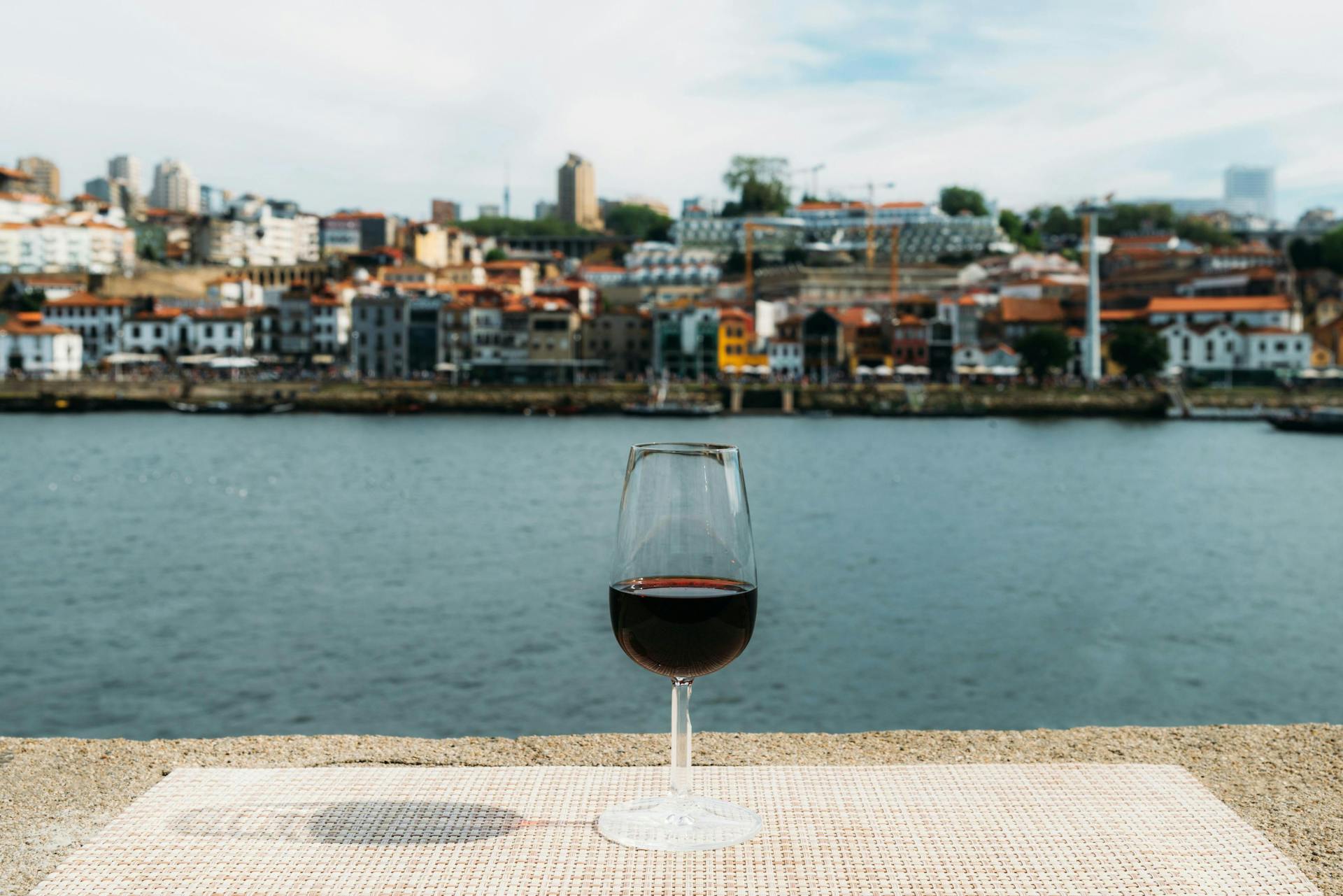 Sampling a few varieties of port is an essential thing to do when visiting Porto. Canva/BrasilNut1.
Sampling a few varieties of port is an essential thing to do when visiting Porto. Canva/BrasilNut1.
Portugal is renowned the world over for the quality of its port, and the northern city of Porto offers the perfect context to try this quintessential Portuguese product. It’s possible to take tours in Portugal through the vineyards of the Duero Valley, where the port is actually produced, but Porto is the place where it is usually aged and exported, and it’s here you’ll find some of the best bars and tasting opportunities.
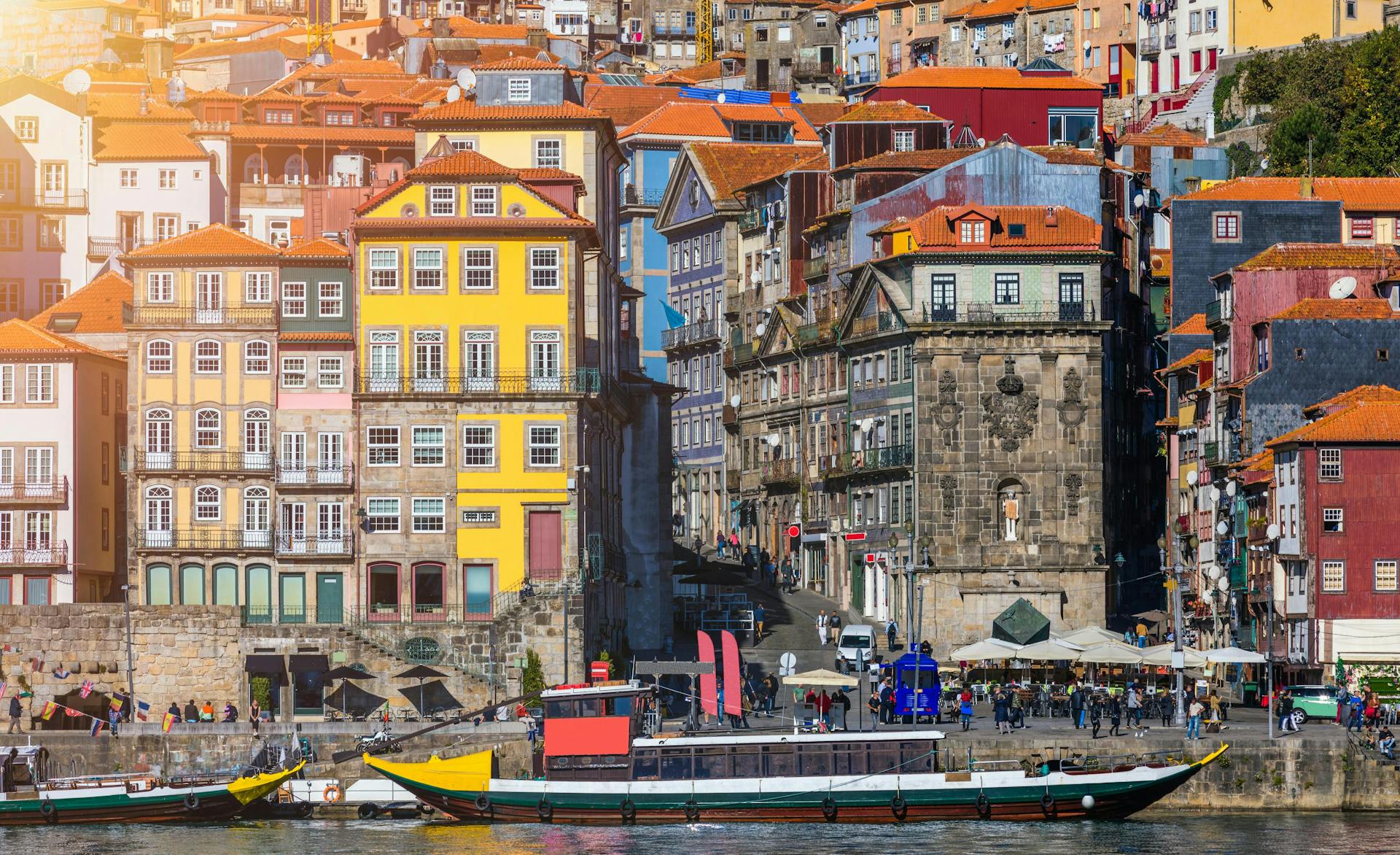 The old town of Porto. Canva/DaLiu.
The old town of Porto. Canva/DaLiu.
Come for the port, but stay in Porto for everything else this vibrant city has to offer. Porto rises up the steep hills on either side of the Duero, linked by high bridges, creating many different vantage points (miradouros) from which to admire the city. The medieval old town, Ribeira, is composed of a maze of atmospheric cobbled streets and lined with picture-perfect, pastel-colored houses.
See also: My Porto Guide
Porto is more than its past, however, and you’ll find a modern, outward-looking city with an edgy artistic culture and a gastronomic scene to die for. Porto is the perfect place in Portugal to indulge your senses.
6. Adventure in the Azores
 Flores Islands, Azores. Canva/Perszing1982.
Flores Islands, Azores. Canva/Perszing1982.
The Azores, a lush Atlantic archipelago and an autonomous region of Portugal, is possibly one of the most beautiful places in the world. These volcanic islands rise up from the sea, covered in lush green vegetation, and dotted with stunning lakes and thermal springs.
This is an ideal spot for active holidaymakers, with stunning hiking and mountain biking trails, and ample opportunity for diving, snorkeling and sailing. The oceans around the islands are teeming with marine life, and lucky visitors can even see sperm whales and bottlenose dolphins, in addition to a whole host of fish, turtles and sharks.
The islands also offer plenty of charms for visitors seeking a more laid-back experience, with pleasant towns and unique local cuisine. One particular specialty is cozido, a meat stew cooked in underground vats using nothing more than thermal energy from local hot springs.
 Ponta Delgada Island, Azores. Canva/aroxopt.
Ponta Delgada Island, Azores. Canva/aroxopt.
Despite its abundant natural charms, the Azores remains relatively unknown among European travellers, and local residents have taken care not to allow the development of the tourist industry to impact upon the fragile eco-system. If you’re looking for a paradise location where it’s possible to travel ethically and sustainably, the Azores has everything you could ever dream of.
7. Visit The Gorgeous Village of Piódão
 Piódão. Canva/JoanaPaisarq.
Piódão. Canva/JoanaPaisarq.
The fairytale village of Piódão is widely regarded as one of the most beautiful villages in Portugal, characterized by its stone houses with black slate roofs.
This archetypal schist village lines the side of a lush, dramatic mountain, offering spectacular views and a stunning display when the houses are lit up at night. From here, enthusiastic hikers can set off for a brisk walk through the eucalyptus forest to the nearby village of Foz d’Egua, known for a triptych of picturesque stone bridges that span the gurgling river.
8. Visit the Chapel of Bones in Evora
 Stacked bones at the Chapel of Bones, Evora. Canva/Adrian Wojcik.
Stacked bones at the Chapel of Bones, Evora. Canva/Adrian Wojcik.
The infamous Chapel of Bones in Evora offers visitors an eerie glimpse into Portuguese history. In the early 17th century, in a frantic search for a place to house the town’s growing dead, a group of Franciscan monks decided to construct a chapel lined with the remains of thousands of former residents.
See also: Évora Private Tour From Lisbon (with Lunch And Wine Tasting)
The arrangement of the skulls and bones is wonderfully evocative, lining the walls and surrounding the many works of art and religious icons. The chapel is a poignant (if slightly menacing) reminder of the mortality and fragility of the human condition, framed by the quote above the entrance portico: “We bones that are here await yours”.
 The roman ruins in Evora. Canva/taolmor.
The roman ruins in Evora. Canva/taolmor.
Aside from this eerie chapel, Evora is a pleasure to explore, offering a Roman temple and bathhouse, and a beautiful medieval cathedral complete with cloisters, all bound by 14th century stone walls. This is a must-see attraction on any Portuguese travel itinerary.
9. Relax by the Ponta da Piedade
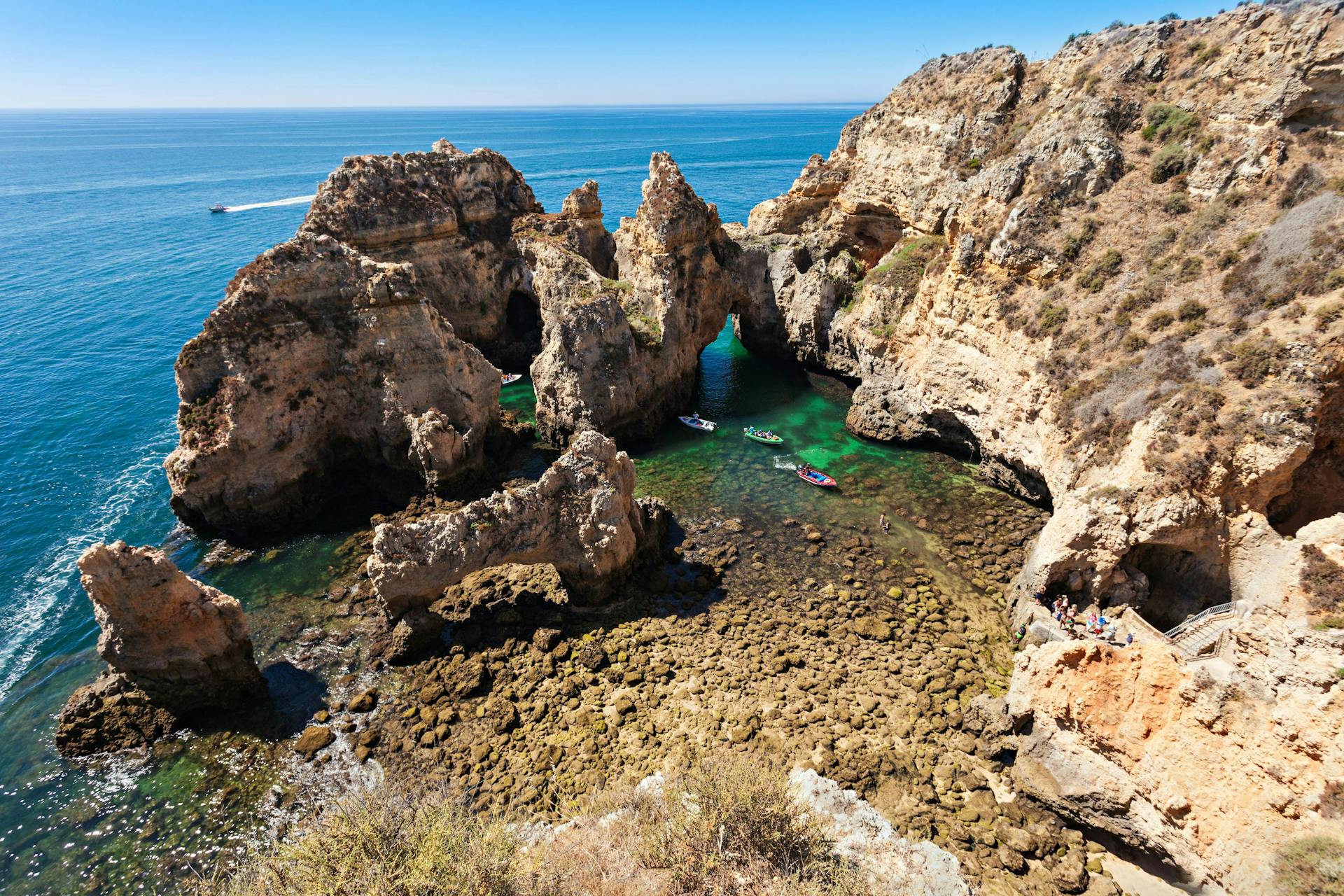 Ponta Piedade. Canva/Andrey Khrobostov.
Ponta Piedade. Canva/Andrey Khrobostov.
The Ponta Piedade is a striking arched rock formation straddling the water at one of the most stunning beaches in the Algarve. Surrounding by crystal clear, blue waters, this tranquil beach is accessible only by boat and is a gorgeous spot to relax in on a hot summer afternoon.
Explore the surrounding caves and grottos, swim in crystal waters, or simply lie back and soak up the sun. What’s more, if you visit in spring you’ll be treated to one of the most stunning displays of wild orchids in the Iberian Peninsula.
10. Sample Fresh Fish in Cascais
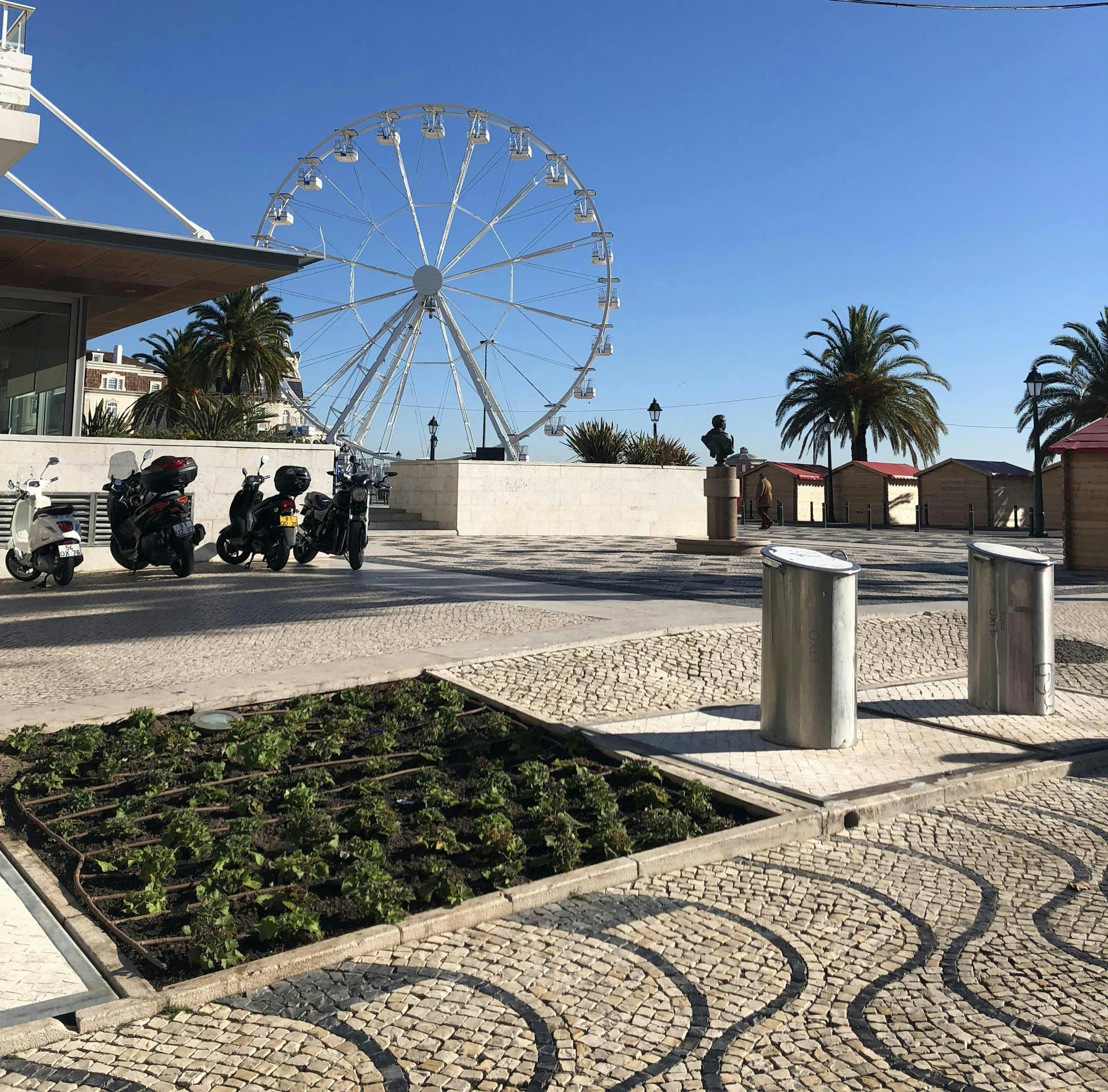 Cascais. Wonderguide/Nina.
Cascais. Wonderguide/Nina.
 Bacalhau – traditional salted cod. Canva/PauloViela.
Bacalhau – traditional salted cod. Canva/PauloViela.
There are so many amazing places to eat fish in Portugal that it’s difficult to know where to start. Fish has historically formed an important part of Portuguese diets, and bacalhau, salted cod, is the country’s unofficial national dish.
The charming fishing village of Cascais, just a stone’s throw from Lisbon, is a wonderful place to sample some incredible seafood. The star of the show is this little town’s fish market, which showcases the best of what the Portuguese seas have to offer.
See also: Small Group Tour - The Beautiful Cascais
Sharing is caring!

